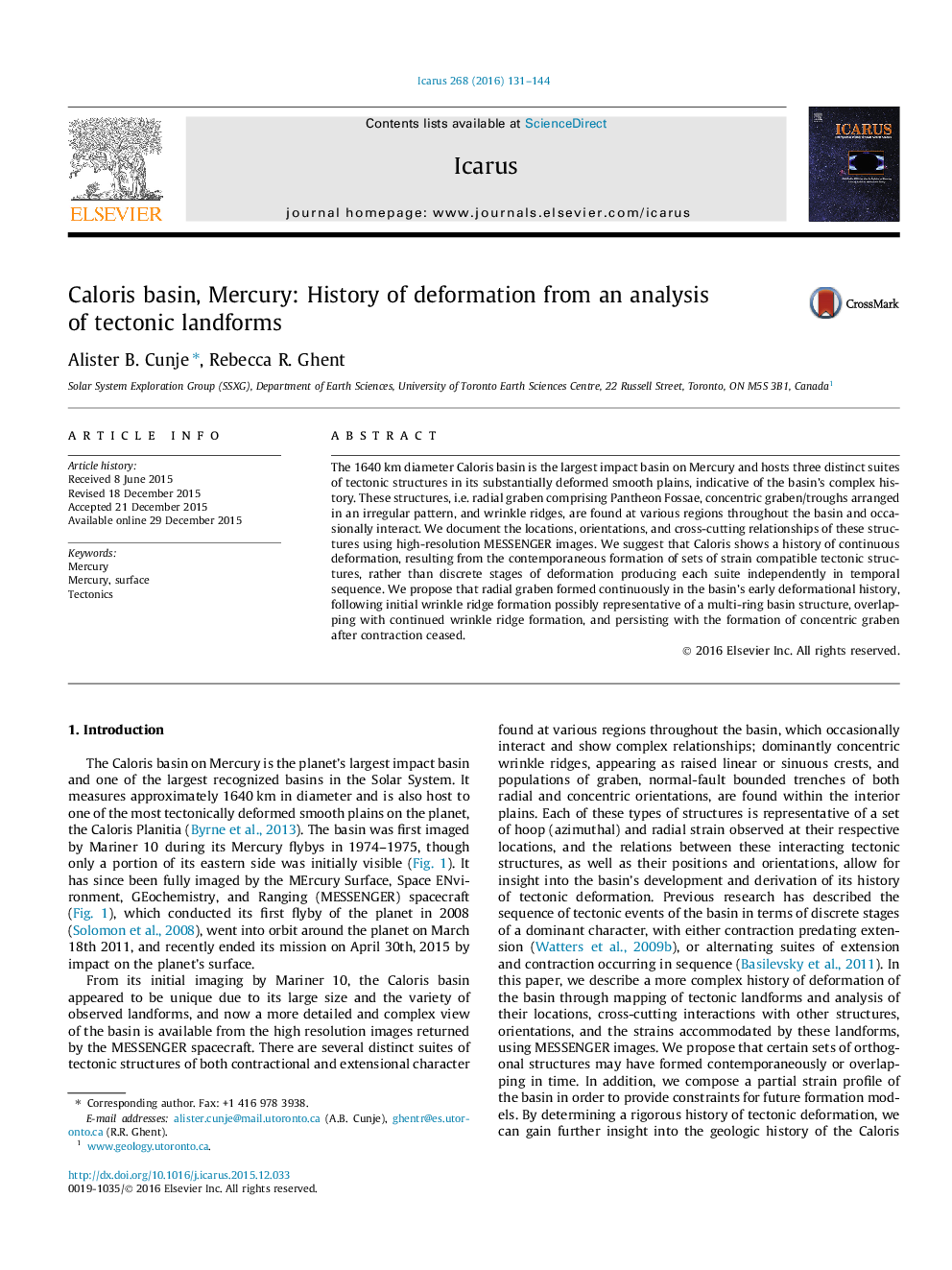| Article ID | Journal | Published Year | Pages | File Type |
|---|---|---|---|---|
| 8135578 | Icarus | 2016 | 14 Pages |
Abstract
The 1640Â km diameter Caloris basin is the largest impact basin on Mercury and hosts three distinct suites of tectonic structures in its substantially deformed smooth plains, indicative of the basin's complex history. These structures, i.e. radial graben comprising Pantheon Fossae, concentric graben/troughs arranged in an irregular pattern, and wrinkle ridges, are found at various regions throughout the basin and occasionally interact. We document the locations, orientations, and cross-cutting relationships of these structures using high-resolution MESSENGER images. We suggest that Caloris shows a history of continuous deformation, resulting from the contemporaneous formation of sets of strain compatible tectonic structures, rather than discrete stages of deformation producing each suite independently in temporal sequence. We propose that radial graben formed continuously in the basin's early deformational history, following initial wrinkle ridge formation possibly representative of a multi-ring basin structure, overlapping with continued wrinkle ridge formation, and persisting with the formation of concentric graben after contraction ceased.
Keywords
Related Topics
Physical Sciences and Engineering
Earth and Planetary Sciences
Space and Planetary Science
Authors
Alister B. Cunje, Rebecca R. Ghent,
